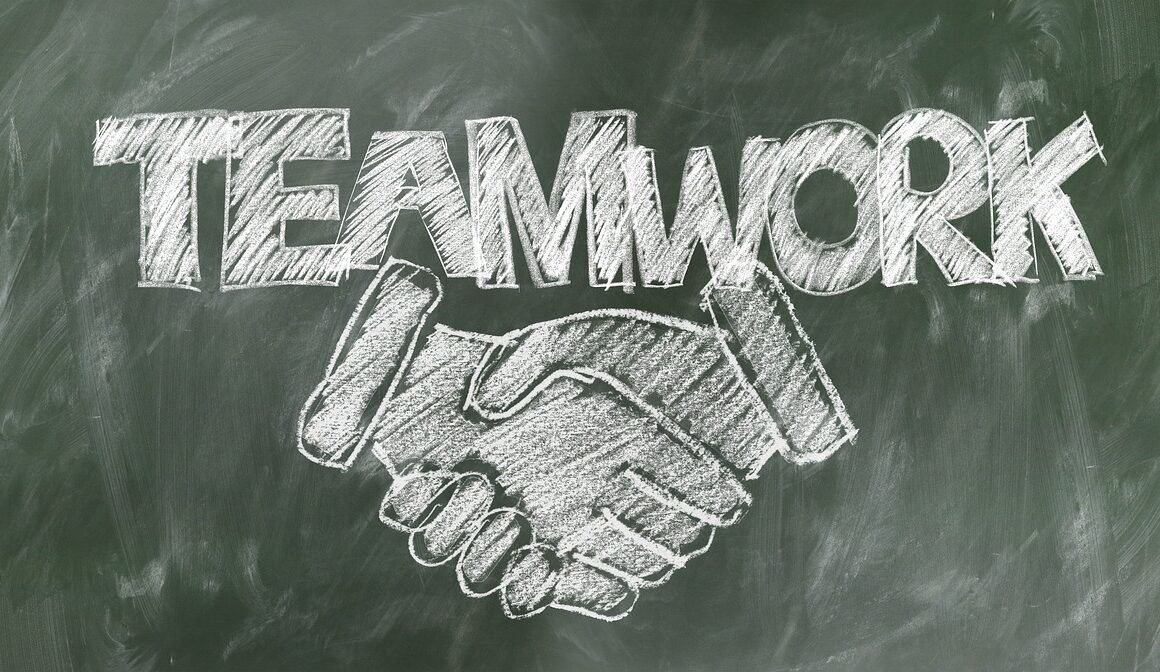Building Cross-Functional Teams for Effective Crisis Management
In today’s complex environment, organizations face numerous challenges that can lead to crises. Effective crisis management demands a concerted effort, involving teams drawn from various departments. Each member contributes unique perspectives, enhancing decision-making processes. This diversity fosters innovative solutions during high-pressure situations. Successfully navigating a crisis often hinges on how well cross-functional teams collaborate. Establishing clear roles is essential for accountability, enabling teams to act swiftly and strategically. By identifying potential risks and preparing in advance, organizations can minimize crisis impact. Training sessions can equip team members with necessary skills and knowledge. Emphasizing the importance of communication promotes transparency, ensuring everyone is on the same page. Team members should engage in regular debrief sessions to assess strengths and weaknesses. Learning from past incidents helps refine strategies for the future. Finally, embracing technology can streamline operations, allowing teams to react efficiently. Utilizing project management tools, communication platforms, and analytical software strengthens collaboration and situational awareness, crucial during crises. Fostering an organizational culture that values teamwork paves the way for successful crisis management, ultimately protecting people and assets.
In effective crisis management, strong leadership is pivotal for success. The adoption and nurturing of effective leadership styles within cross-functional teams ensure that crises are managed adeptly. Leaders should create an environment that promotes open dialogue and encourages input from all team members, regardless of their position. This empowers individuals to share insights and take confident action during stressful scenarios. Cross-functional teams thrive on supporting one another, allowing leaders to delegate responsibilities effectively. A decentralized approach to leadership fosters initiative among team members, facilitating a rapid response to emerging crises. Leaders should stay attuned to any changes in the environment as situations develop. This agility can make a significant difference in how organizations navigate adversity. Additionally, fostering trust among team members is essential for effective collaboration. Trust allows teams to work seamlessly together and helps prevent misunderstanding. Regular team-building activities can strengthen these bonds. Stakeholder engagement further broadens perspectives, gathering insights from various levels and departments. The inclusion of diverse viewpoints enhances problem-solving while promoting ownership across the organization. Ultimately, leadership that encourages participation will harness the full potential of cross-functional teams.
Training and Preparation for Crisis Management
To ensure optimal performance during crises, organizations must prioritize training and preparation. Comprehensive training programs develop the skills necessary to manage crises effectively. Workshops focusing on conflict resolution, communication, and decision-making enhance team members’ capabilities. Simulated exercises offer hands-on experience, enabling teams to practice responses in controlled environments. These simulations allow for the evaluation of established protocols while fostering connections among team members. Additionally, preparedness should extend beyond training sessions. Organizations must continually assess potential risks to stay ahead of any threats. Establishing a robust risk assessment process identifies vulnerabilities and allows teams to devise contingency plans. This proactive approach instills confidence among team members. Regular updates to crisis management protocols are crucial due to evolving challenges and changes in the industry landscape. Collaboration with external partners, such as emergency services, can enhance an organization’s preparedness. This cooperation leads to a shared understanding of procedures and expectations. Moreover, encouraging feedback after training sessions optimizes curricula. Continuous improvement drives effectiveness and adaptability. Prepared teams navigate crises with greater confidence while reduced chaos cultivates a more conducive environment for resolving issues efficiently.
The role of technology in crisis management is increasingly vital for organizations aiming to stay resilient. Digital tools serve as powerful assets for facilitating communication and collaboration during crises. Real-time information sharing enables cross-functional teams to make informed decisions quickly. Utilizing project management software helps track tasks, deadlines, and responsibilities, increasing accountability and transparency. Moreover, analytical tools allow organizations to triangulate data, providing insights into possible crisis scenarios. Predictive analytics can identify potential threats before they materialize, equipping teams to act proactively. Social media and communication platforms support real-time updates, keeping team members informed of changing circumstances. Furthermore, online training modules deliver essential skills conveniently and efficiently. Integrating technology into crisis management strategies enhances overall response capabilities. Organizations should invest in reliable systems that foster seamless connectivity and collaboration among teams. Security should also be prioritized to protect sensitive data during crises. Regular evaluations of technology tools ensure they meet ever-evolving organizational needs. Leveraging technology ultimately fosters resilience and agility, empowering cross-functional teams to respond to crises effectively while ensuring essential operations continue amidst disruptions.
Monitoring and Continuous Improvement
Monitoring the effectiveness of crisis management strategies requires ongoing evaluation and refinement. Post-crisis assessments play a critical role in capturing lessons learned from each situation. By gathering feedback from all team members, organizations can identify areas for improvement. A structured process for analyzing responses helps pinpoint successes and challenges. Regularly reviewing the effectiveness of cross-functional teams maintains operational readiness. Organizations can develop performance metrics to track progress, making adjustments as necessary. Creating a culture of continuous improvement encourages adaptability within teams. It is essential to embrace feedback, transforming it into actionable insights for future preparedness. Additionally, stakeholders should have the opportunity to provide input regarding crisis management approaches. This collaboration fosters inclusivity, allowing for diverse perspectives that strengthen decision-making. Organizations can learn from industry best practices by connecting with similar organizations and examining their successes and failures. Participating in relevant workshops contributes further knowledge. Sharing experiences boosts collective awareness of potential risks. Investing in training and development solidifies this continuous improvement mindset. Ultimately, organizations that prioritize monitoring and learning enhance their crisis management capabilities, ensuring effective responses to future challenges.
Moreover, effective communication serves as the backbone of successful crisis management, bridging gaps between teams. Developing a clear communication plan minimizes confusion and ensures that everyone understands their roles. Establishing protocols for both internal and external communication is crucial to maintain transparency during crises. Promoting clarity around messaging helps address stakeholders’ concerns and communicates actionable steps. Additionally, utilizing multiple communication channels increases reach while catering to preferences. Stakeholder engagement is essential for building trust. Engaging with external partners and the community aids in fostering improved relationships. Involving public relations professionals in communication strategies ensures that messages are coherent and well-crafted. Furthermore, leveraging media opportunities can enhance an organization’s credibility during crises. Actively managing the flow of information reduces misinformation and ambiguity, crucial for maintaining team morale. Regular updates keep everyone informed and prepared for any developments. Reassessing communication strategies after crises ensures effectiveness in relaying messages. Successful organizations recognize the importance of fostering ongoing dialogue with stakeholders. Transparent communication builds a foundation of trust, creating an environment conducive to effective crisis management while minimizing the fallout of adverse situations.
The Importance of Emotional Intelligence in Teams
Incorporating emotional intelligence into cross-functional teams significantly enhances crisis management outcomes. Team members equipped with high emotional intelligence possess skills to manage stress and navigate difficult situations effectively. This competency fosters collaboration among teams, allowing individuals to empathize with each other’s perspectives. During crises, maintaining emotional balance helps team members focus on their goals while supporting one another. Training programs can help develop these emotional intelligence skills, fostering understanding of interpersonal dynamics. Moreover, recognizing stress indicators within the team can prompt timely interventions before situations escalate. Such awareness also promotes resilience, enabling teams to rebound quickly from setbacks. Leaders should model emotional intelligence in their approach, demonstrating vulnerability and openness. By doing so, they inspire team members to engage and express their feelings, thereby enhancing overall morale. Encouraging a supportive environment cultivates a sense of belonging, essential during times of distress. Engaging in team-building activities can further strengthen emotional connections, enabling teams to collaborate better. Ultimately, fostering emotional intelligence enhances cross-functional teams, promoting effective communication and teamwork during crises, ultimately increasing the likelihood of successful outcomes.
Finally, the long-term benefits of effective crisis management extend beyond immediate resolution. Organizations that cultivate strong cross-functional teams lay the groundwork for resilience against future challenges. The lessons learned during crises build muscle memory, enabling teams to respond more confidently in subsequent situations. This proactive approach strengthens the overall organizational culture, embedding a commitment to preparedness. By prioritizing crises management, organizations also reinforce their reputations. Stakeholders recognize and value organizations proactive in navigating adversity, fostering loyalty and trust. Moreover, the ability to recover swiftly from crises minimizes financial losses, safeguarding bottom lines. Continuous participation in training and development opportunities further enhances team skills, boosting confidence and morale. Fostering a culture embracing adaptability and innovation encourages teams to be agile in navigating unexpected occurrences. As a result, organizations can evolve their strategies by addressing various barriers encountered. Ultimately, the impact of effective crisis management resonates throughout the organization. Teams that collaborate effectively develop essential relationships that translate into success. Investing in these teams yields dividends in heightened resilience, improved responses, and sustainable organizational growth, establishing a solid foundation for navigating future uncertainties.


